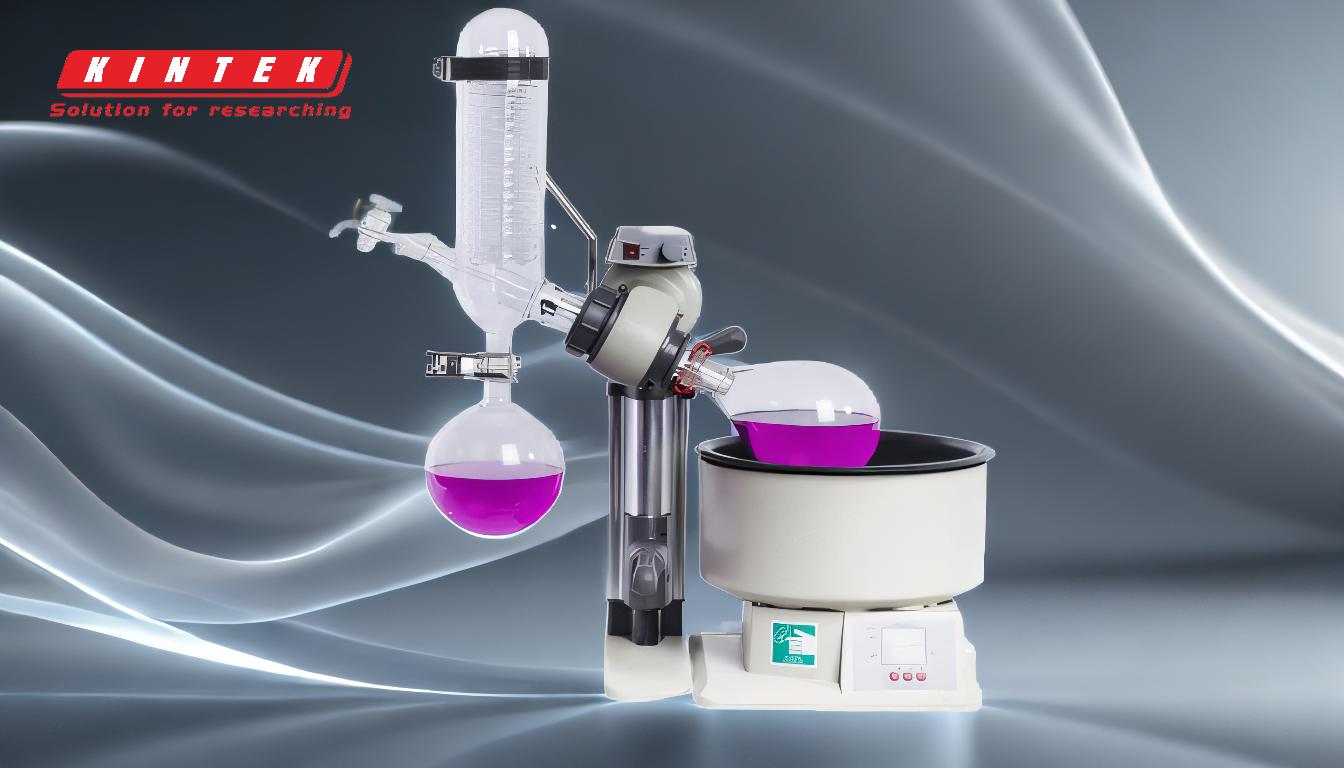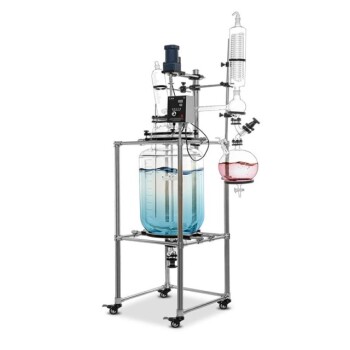The temperature range for a rotary evaporator typically depends on the solvent being evaporated and the specific setup of the equipment. For most common lab solvents, the water bath temperature is usually set between 25°C and 50°C, with 30-40°C being a common range to balance efficiency and safety. Lower temperatures can slow down the evaporation process but reduce the risk of bumping and thermal decomposition. Additionally, the condenser temperature should be set below zero to ensure effective condensation of the solvent vapors. Proper temperature selection is crucial to avoid damaging heat-sensitive compounds and to ensure smooth operation.
Key Points Explained:

-
Water Bath Temperature Range (25°C to 50°C):
- The water bath temperature is a critical parameter in rotary evaporation. For most common lab solvents, a range of 25°C to 50°C is sufficient. This range ensures efficient evaporation without causing excessive thermal stress on the solvent or the sample.
- Lower temperatures (e.g., 30-40°C) are often preferred to minimize the risk of thermal decomposition, especially for heat-sensitive compounds. However, lower temperatures may slow down the evaporation process.
-
Ethanol Vapor Temperature (15-20°C):
- When working with ethanol or similar solvents, the vapor temperature is typically maintained at 15-20°C. This lower temperature helps prevent the solvent from reaching its boiling point too quickly, reducing the risk of bumping (sudden, violent boiling).
-
Condenser Temperature (Below Zero):
- The condenser must be set to a temperature below zero (usually around -10°C to -20°C) to effectively condense the solvent vapors. This ensures that the solvent is efficiently recovered and prevents it from escaping into the vacuum system.
-
Balancing Speed and Safety:
- Lower water bath temperatures slow down the evaporation process but reduce the likelihood of bumping and thermal decomposition. This is particularly important for sensitive or volatile compounds.
- Tools like a manometer (to measure vacuum pressure) and a distillation nomograph (to estimate boiling points under reduced pressure) can help optimize the temperature and vacuum settings for safe and efficient operation.
-
Vacuum Pump Considerations:
- Most common lab solvents require a low-vacuum pump, which can be replaced by a sink aspirator in some cases. The vacuum level, combined with the water bath temperature, determines the overall efficiency of the evaporation process.
- Proper vacuum control is essential to avoid excessive boiling or bumping, especially when working with solvents that have low boiling points.
-
Practical Tips for Temperature Selection:
- Always consider the boiling point of the solvent under reduced pressure. Use a distillation nomograph to estimate the boiling point at the chosen vacuum level.
- Monitor the process closely, especially when working with new or unfamiliar solvents, to ensure that the temperature and vacuum settings are appropriate.
- Adjust the temperature gradually, starting at the lower end of the range, and increase it only if necessary to achieve the desired evaporation rate.
By carefully selecting and controlling the temperature settings, rotary evaporation can be performed safely and efficiently, minimizing the risk of sample degradation or equipment damage.
Summary Table:
| Parameter | Temperature Range | Purpose |
|---|---|---|
| Water Bath Temperature | 25°C to 50°C (30-40°C common) | Ensures efficient evaporation while minimizing thermal stress. |
| Ethanol Vapor Temperature | 15-20°C | Prevents bumping and reduces risk of rapid boiling. |
| Condenser Temperature | Below zero (-10°C to -20°C) | Effectively condenses solvent vapors for recovery. |
| Vacuum Pump | Low-vacuum or sink aspirator | Controls pressure to optimize evaporation and prevent excessive boiling. |
Need help optimizing your rotary evaporation process? Contact our experts today for tailored advice!

















